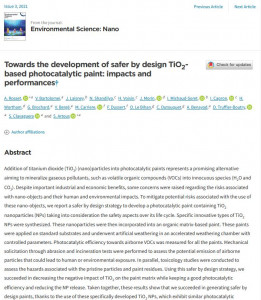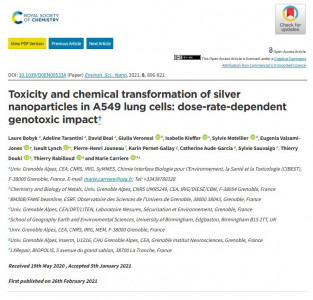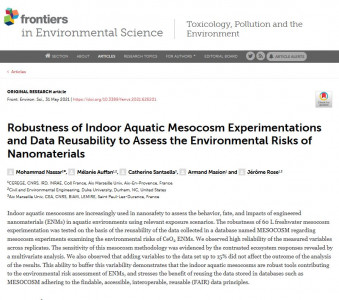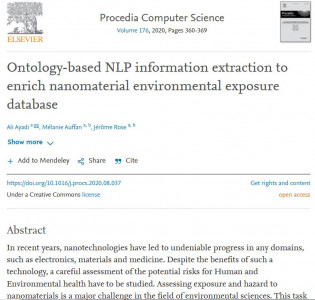Vincent Bartolomei (LCE) will defend his PhD thesis about " Study of the chemistry of nitrous acid (HONO) for indoor atmospheres" on the 25th February 2015 in Marseille.
Vincent Bartolomei (LCE) will defend his PhD thesis on the 25th February 2015 in the "Amphithéâtre Science Naturelle in Marseille, Campus Saint Charles".
Abstract :
People in Western societies spend about 90% of their time indoors, predominantly within indoor places. The residence time of the airborne indoor pollutants is much longer due to the smaller volumes compared to the outdoor atmosphere and low air exchange rates. Therefore, a comprehensive understanding of indoor air quality is essential.
Nitrous acid (HONO) is an emerging indoor pollutant because 1) it can lead to human respiratory tract irritation and formation of carcinogenic nitrosamines, and 2) it can be effectively photolyzed leading to a pulse of hydroxyl radicals (OH).
The PhD work here presented is focused on understanding of the formation processes of oxidizing species such as HONO and, hence, OH radicals in the built environment.
For this purpose, an experimental campaign was carried out at the LOTASC chamber facility at the University of Bayreuth, Germany. Nitrous acid was emitted by a burning candle which was considered as an example of combustion processes indoors. This direct HONO source releases high HONO levels in order of few tens of ppb during a short period of time.
The solar simulator which allowed to modulate the light intensity was irradiating the chamber facility simulating typical indoor conditions. The photolysis of HONO yields peak OH concentration values, that for the range of indoors lightning conditions were estimated in the range 5.7 · 106 – 1.6 · 107 cm-3. Excellent agreement exist between the experimental data and the performed model. These findings suggest that OH reactivity takes place at our dwellings and the consequences of this reactivity ought to be studied hereafter.
Laboratory measurements were performed by flow tube photoreactor to assess the light-induced heterogeneous chemistry as a source of HONO indoors. Selected indoor surfaces were studied under realistic conditions at various indoor light intensities and humidities. High HONO levels were observed during the light mediated heterogeneous chemistry demonstrating that indoor surfaces are not only physical but also photochemical substrates that play an active role in the enhancement of the generation of HONO indoors.
Finally, the photocatalytic paints were tested with respect to nitrogen oxides and HONO remediation. The obtained results demonstrated that the quantity of TiO2 nanoparticles embedded in the paint is of crucial importance with respect to the NO2 removal but unfortunately may also influence the formation of harmful intermediates like HONO, a fact which should be considered for future optimization of photocatalytic paints aimed for indoor applications. The emerged results of this thesis can serve as input data for the further development of an appropriate indoor photochemical model for better characterization of indoor air quality.
Key Words : Nitrous Acid, Hydroxyl Radicals, Nitrogen Dioxide, photolysis, uptake coefficient, heterogeneous reactivity and indoor environment.









